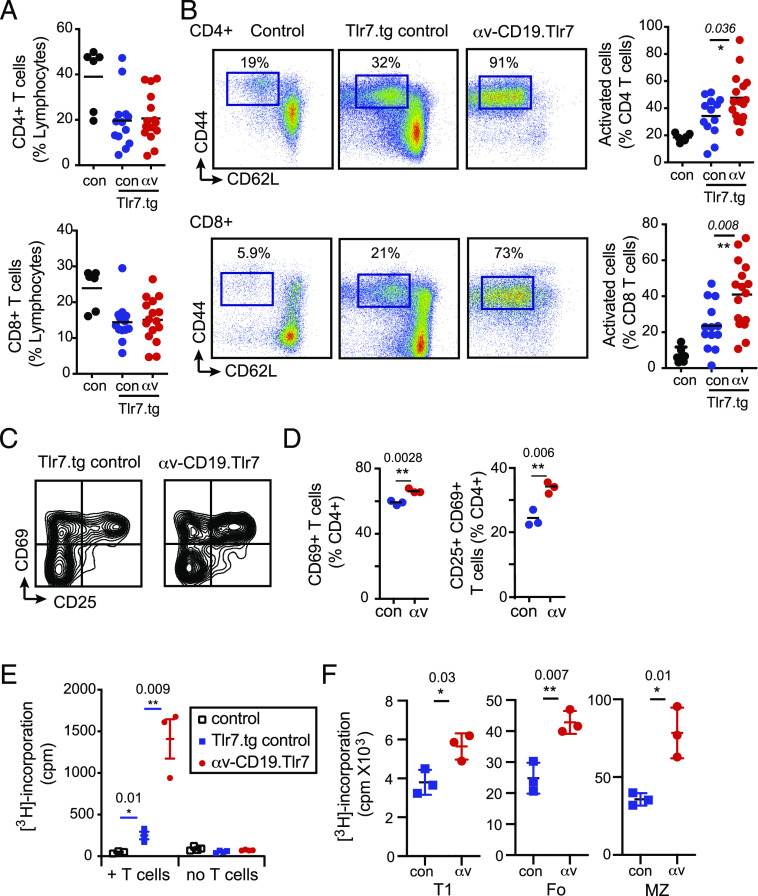FIGURE 3.
Increased T cell activation in αv-CD19.Tlr7.1 tg mice. (A and B) Spleens from 7- to 8-wk-old wild-type control mice (con), Tlr7.tg controls (con-Tlr7.tg), and αv-CD19.Tlr7 mice (αv-Tlr7.tg) were analyzed for CD3+ CD4+ and CD3+ CD8+ T cells as a frequency of total splenocytes by FACS (A). CD4 and CD8 were further analyzed for expression of CD44 and CD62L cells as shown (B). Each data point represents a single mouse. The p values <0.05 (Mann–Whitney U test) for comparisons between control Tlr7.1 tg and αv-CD19.Tlr7.1 tg mice are shown (n = 6 non-tg and n ≥ 13 per group tg mice). *p < 0.05, **p < 0.01. (C–E) B cells from TLR7.tg controls and αv-CD19.Tlr7 mice were cultured with CD4+ T cells from control mice in the presence of anti-CD3. T cell activation (based on CD25 and CD69) (C and D) and cell proliferation measured by [3H]thymidine incorporation (E) were measured after 3 d. (F) Sorted transitional, MZ, and Fo B cells from control TLR7.1 tgs (con-Tlr7.1) and αv-CD19.Tlr7.1 tg mice (αv-Tlr7.1) were cultured with control CD4+ T cells in the presence of anti-CD3, and cell proliferation was measured after 48 h. All data shown are mean ± SD of replicate cultures from one experiment. Similar results were seen in at least three independent experiments. The p values <0.05 (Student t test) for comparisons between control Tlr7.1 tg and αv-CD19.Tlr7.1 tg mice are shown. *p < 0.05, **p < 0.01.

